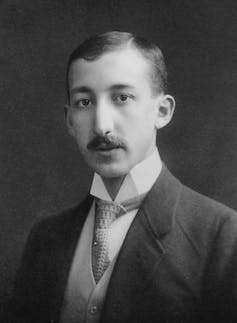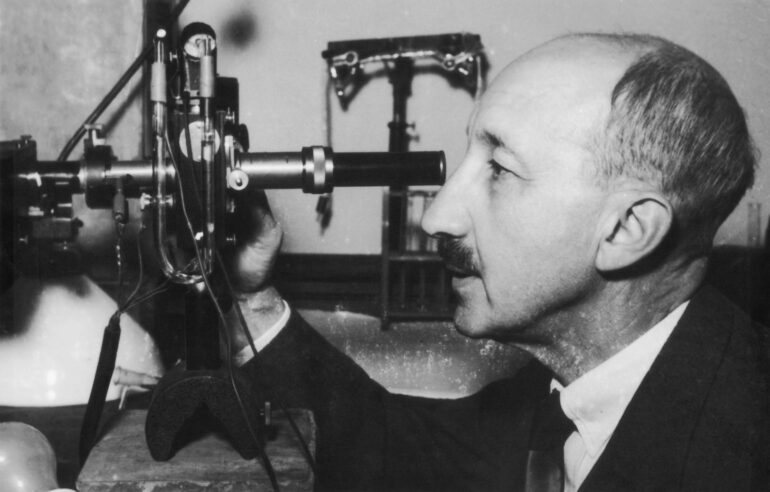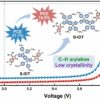Each October, the Nobel Prizes celebrate a handful of groundbreaking scientific achievements. And while many of the awarded discoveries revolutionize the field of science, some originate in unconventional places. For George de Hevesy, the 1943 Nobel Laureate in chemistry who discovered radioactive tracers, that place was a boarding house cafeteria in Manchester, U.K., in 1911.

Hungarian chemist George de Hevesy.
Magnus Manske
De Hevesey had the sneaking suspicion that the staff of the boarding house cafeteria where he ate at every day was reusing leftovers from the dinner plates – each day’s soup seemed to contain all of the prior day’s ingredients. So he came up with a plan to test his theory.
At the time, de Hevesy was working with radioactive material. He sprinkled a small amount of radioactive material in his leftover meat. A few days later, he took an electroscope with him to the kitchen and measured the radioactivity in the prepared food.
His landlady, who was to blame for the recycled food, exclaimed “this is magic” when de Hevesy showed her his results, but really, it was just the first successful radioactive tracer experiment.
We are a team of chemists and physicists who work at the Facility for Rare Isotope Beams, located at Michigan State University. De Hevesy’s early research in the field has revolutionized the way that modern scientists like us use radioactive material, and it has led to a variety of scientific and medical advances.
The nuisance of lead
A year before conducting his recycled ingredients experiment, Hungary-born de Hevesy had traveled to the U.K. to start work with nuclear scientist Ernest Rutherford, who’d won a Nobel Prize just two years prior.
Rutherford was at the time working with a radioactive substance called radium D, a valuable byproduct of radium because of its long half-life (22 years). However, Rutherford couldn’t use his radium D sample, as it had large amounts of lead mixed in.
When de Hevesy arrived, Rutherford asked him to separate the radium D from the nuisance lead. The nuisance lead was made up of a combination of stable isotopes of lead (Pb). Each isotope had the same number of protons (82 for lead), but a different number of neutrons.
De Hevesy worked on separating the radium D from the natural lead using chemical separation techniques for almost two years, with no success. The reason for his failure was that, unknown to anyone at the time, radium D was actually a different form of lead – namely the radioactive isotope, or radioisotope Pb-210.
Nevertheless, de Hevesy’s failure led to an even bigger discovery. The creative scientist figured out that if he could not separate radium D from natural lead, he could use it as a tracer of lead.
Radioactive isotopes, like Pb-210, are unstable isotopes, which means that over time they will transform into a different element. During this transformation, called radioactive…



